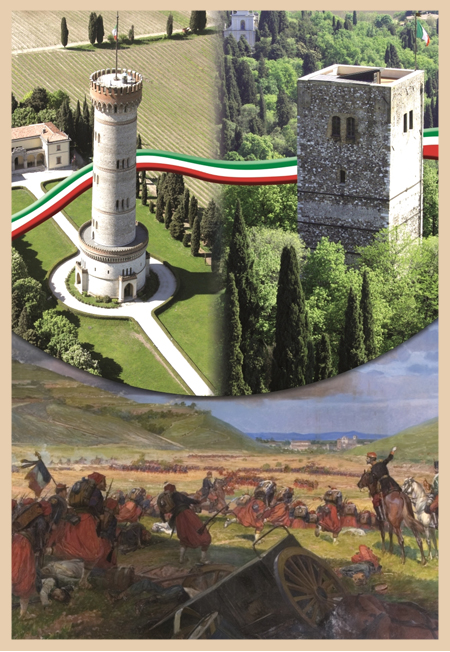
At the roots of the homeland history:
““We are sensitive to the shouts of pain that are coming to us from many parts of Italy”. This statement, that Victor Emmanuel II made on January 10th 1859 in front of the Subalpine Parliament, was the call to arms that found answer and fulfilment on the battlefield of San Martino and Solferino on June 24th of that same year.
Thanks to the agreements of Plombières, stipulated in June 1858, Emperor Napoleon III had promised Piedmont support against Austria in case of attack. Piedmont started to supply itself with arms and enlist volunteers, partly in the regular army and partly commanded by Garibaldi. On April 23rd Austria ordered Piedmont to disarm within three days. It ignored Austria’s request and by April 25th the French Army had crossed the French-Sardinian border.
The plea that Napoleon III made to the French, took a real hold on public opinion, which intervened in favour of Italy. Troops left from Paris, and passing over Mont Cenis arrived at Turin, while Napoleon reached Genoa by sea. The French Army was welcomed with enthusiasm by the Italian people: the Zouaves and the Turcos especially who had been recruited in the colonies and with their fame of
wild courage and their bizarre uniforms aroused great interest.
And so a war involving three sovereigns started: from one side Victor Emmanuel II and his ally Napoleon III, from the other Franz Joseph, Emperor of Austria, just twenty-nine at the time. All three armies had organizational and strategic problems: in particular the Austrians were unable to stop their adversaries. After battles in Montebello (May 20th), Palestro (May 20th) and Magenta (June 2nd), the French Army marched into Milan (June 7th). The military advance continued after defeating the Austrian Army in Melegnano. On June 17th Victor Emmanuel entered Brescia, followed by Napoleon the next day. From here the two Armies advanced towards the River Mincio beyond which they believed their enemy to be. The Piedmont army that was between Lonato and Desenzano and the French one, a part in Carpenedolo, and a part in Montichiari with Napoleon III, started their reconnaissance.
